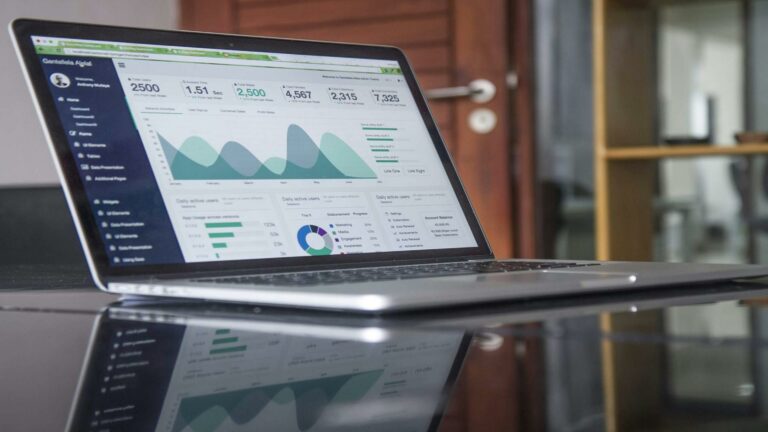Improve Website Loading Speed: 15 Expert Tips for Faster Sites
Improve Website Loading Speed: 15 Expert Tips
In today’s fast-paced digital world, website loading speed is crucial for success. A slow-loading website can lead to frustrated users, decreased conversions, and poor search engine rankings. At Web Design London, we understand the importance of optimizing your site’s performance. In this comprehensive guide, we’ll explore 15 expert tips to improve website loading speed and enhance your online presence.
1. Optimize Images
Large, unoptimized images are often the culprit behind slow-loading websites. Optimize your images by compressing them, using the correct file formats, and implementing lazy loading techniques.
2. Leverage Browser Caching
Implement browser caching to store static files locally on users’ devices, reducing server requests and improving load times for returning visitors.
3. Minify CSS, JavaScript, and HTML
Remove unnecessary characters, whitespace, and comments from your code to reduce file sizes and improve loading speed.
4. Enable Gzip Compression
Use Gzip compression to reduce the size of your files before sending them to the browser, significantly decreasing load times.
5. Use a Content Delivery Network (CDN)
Implement a CDN to distribute your website’s static content across multiple servers worldwide, reducing latency and improving load times for users in different geographic locations.
6. Optimize Server Response Time
Improve your server’s configuration, use a high-quality hosting provider, and optimize your database queries to reduce server response time.
7. Minimize HTTP Requests
Reduce the number of elements on your pages, combine files where possible, and use CSS sprites to decrease HTTP requests and improve loading speed.
8. Use Asynchronous Loading for CSS and JavaScript
Implement asynchronous loading for non-critical CSS and JavaScript files to prevent them from blocking the rendering of your page.
9. Optimize Web Fonts
Optimize your web fonts by using font subsetting, hosting fonts locally, and limiting the number of font variations used on your site.
10. Implement AMP (Accelerated Mobile Pages)
Consider using AMP for your mobile pages to create lightweight, fast-loading versions of your content for mobile users.
11. Use Server-Side Rendering
Implement server-side rendering for dynamic content to improve initial page load times and enhance SEO performance.
12. Optimize Your Database
Regularly clean up your database, optimize queries, and use caching mechanisms to improve database performance and reduce load times.
13. Minimize Redirects
Reduce the number of redirects on your site, as each redirect creates additional HTTP requests and increases load times.
14. Use a Performance-Optimized Theme
Choose a lightweight, well-coded theme or framework that prioritizes performance and speed.
15. Monitor and Analyze Your Website’s Performance
Regularly use tools like Google PageSpeed Insights, GTmetrix, and WebPageTest to monitor your site’s performance and identify areas for improvement.
By implementing these 15 expert tips, you can significantly improve your website’s loading speed, providing a better user experience and boosting your search engine rankings. Remember, optimizing website performance is an ongoing process, so continually monitor and refine your site for the best results.
1. Optimize Images for Faster Loading
Optimizing Images for Faster Website Loading
One of the most effective ways to improve website loading speed is by optimizing your images. Large, uncompressed images can significantly slow down your site. Here’s how to optimize your images:
- Compress images: Use tools like TinyPNG or ImageOptim to reduce file size without compromising quality.
- Choose appropriate file formats: Use JPEG for photographs and PNG for graphics with transparency. Consider using next-gen formats like WebP for even better compression.
- Implement lazy loading: Load images below the fold only when they’re about to enter the viewport, reducing initial page load time.
- Resize images: Serve appropriately sized images for different devices and screen resolutions.
- Optimize alt tags: Use descriptive, keyword-rich alt text for better SEO and accessibility.
Additionally, consider using a Content Delivery Network (CDN) to serve images from servers closer to your users, further reducing load times. By implementing these techniques, you can significantly enhance your website’s performance, improve user experience, and potentially boost your search engine rankings.
2. Leverage Browser Caching
Implementing Browser Caching for Faster Loading
Browser caching is a powerful technique that allows returning visitors to load your site more quickly by storing static files locally. This optimization strategy is crucial for improving website loading speed and enhancing user experience. To implement browser caching effectively:
- Set appropriate expiration times for different types of content, such as images, CSS, and JavaScript files
- Use tools like W3 Total Cache for WordPress sites to simplify the caching process
- Configure your server’s .htaccess file for manual caching control and fine-tuned performance
- Regularly review and update your caching strategy to ensure optimal results
Advanced caching techniques:
- Leverage browser cache to store resources locally on the user’s device
- Implement server-side caching to reduce database queries and server load
- Use Content Delivery Networks (CDNs) to cache and serve static content from geographically distributed servers
By implementing these caching strategies, you can significantly reduce page load times and improve overall website performance. This not only enhances user experience but also positively impacts your search engine rankings, as page speed is a crucial factor in SEO.
Pro tip: Use tools like GTmetrix or Google PageSpeed Insights to analyze your website’s caching performance and identify areas for improvement.
3. Minify CSS, JavaScript, and HTML
Minification: A Key Strategy to Improve Website Loading Speed
Minification is a crucial technique for improving website loading speed and overall performance. This process involves removing unnecessary characters from your code without altering its functionality, resulting in smaller file sizes and faster load times. Here’s how to effectively implement minification:
- Use tools like UglifyJS for JavaScript minification
- Employ CSS Nano for CSS minification
- Implement HTML minification with plugins or server-side tools
- Integrate automated build processes to minify code during deployment
Optimizing page speed through minification can significantly enhance user experience and contribute to better search engine rankings. To further boost your website’s performance:
Complementary Techniques
1. Image Optimization: Optimize images for faster loading by compressing them without sacrificing quality. This can dramatically reduce page load times, especially for image-heavy websites.
2. Leverage Browser Caching: Implement browser caching to store static files locally in users’ browsers, reducing server requests and speeding up subsequent page loads.
3. Enable Gzip Compression: Use Gzip compression to reduce the size of your HTML, CSS, and JavaScript files before sending them to the browser.
4. Utilize a Content Delivery Network (CDN): Implement a CDN to distribute your content across multiple, geographically diverse servers, reducing latency and improving load times for users worldwide.
By combining minification with these additional strategies, you can create a high-performance website that not only loads quickly but also provides an excellent user experience. Remember, a faster website can lead to improved engagement, higher conversion rates, and better search engine rankings.
4. Enable GZIP Compression
Implementing GZIP Compression to Improve Website Loading Speed
GZIP compression is a powerful technique that can significantly reduce the size of files sent from your server to the browser, which is crucial for improving website loading speed. By compressing your site’s files, you can ensure faster transfer times and provide a better user experience. Let’s explore how to implement GZIP compression effectively.
How GZIP Compression Works
GZIP compression works by locating and removing duplicate characters in your text files. When a server receives a request for a web page, it checks if the browser supports GZIP. If it does, the server compresses the markup before sending it to the browser, which then decompresses and displays the content to the user. This process can reduce file sizes by up to 70-90%, resulting in significantly faster load times.
Enabling GZIP Compression
To enable GZIP compression on your website, you have several options:
- Add appropriate code to your .htaccess file on Apache servers
- Configure your Nginx server to use GZIP compression
- Use plugins like WP Rocket for WordPress sites, which can automatically enable and manage GZIP compression
Verifying GZIP Compression
After implementation, it’s crucial to verify that GZIP compression is working correctly. You can use online tools like GTmetrix or CheckGZIPCompression to test if your site is properly compressed. These tools will show you how much your page size has been reduced and confirm that compression is active.
Benefits of GZIP Compression
Implementing GZIP compression offers several advantages:
- Faster loading times: Smaller file sizes lead to quicker downloads and rendering.
- Reduced bandwidth usage: Less data transfer means lower hosting costs and better performance for users with limited internet connections.
- Improved user experience: Faster sites lead to higher engagement and lower bounce rates.
- Better SEO performance: Page speed is a ranking factor for search engines, so faster load times can improve your site’s visibility.
By implementing GZIP compression, you’re taking a significant step towards optimizing your website’s performance. Remember, while GZIP is highly effective, it should be part of a broader strategy to improve website loading speed, including image optimization, efficient coding practices, and leveraging browser caching.
5. Use a Content Delivery Network (CDN)
Implementing a CDN to Improve Website Loading Speed
A Content Delivery Network (CDN) is a powerful tool to improve website loading speed by distributing your site’s static files across multiple servers worldwide. This reduces the distance between the user and server, resulting in faster load times. To implement a CDN effectively:
- Choose a reputable CDN provider like Cloudflare or Amazon CloudFront
- Configure your site to use the CDN for static assets such as images, CSS, and JavaScript files
- Ensure your CDN is properly set up and optimized for maximum performance
- Regularly monitor and adjust your CDN settings for optimal results
Web Design London can help you select and implement the right CDN solution for your site, ensuring that your website loads quickly for visitors from all around the world. By leveraging our expertise in mobile-friendly website development, we can further enhance your site’s performance across all devices.
6. Optimize Database Queries
Optimize Database Performance for Faster Website Loading
Inefficient database queries can significantly slow down your site. To optimize your database and improve website loading speed, consider the following strategies:
- Implement caching to reduce database calls
- Regularly optimize and clean up your database
- Use indexing to speed up query execution
- Apply query optimization techniques
- Leverage a content delivery network (CDN)
Caching for Improved Performance
Implementing caching is crucial for reducing the load on your database. Browser caching can store static content locally, minimizing repeated requests to the server. Additionally, server-side caching can store frequently accessed data in memory, further reducing database queries.
Database Optimization and Maintenance
Regular database optimization involves tasks such as removing unnecessary data, optimizing table structures, and updating statistics. This process can significantly improve query performance and overall site speed.
Indexing for Faster Queries
Proper indexing is essential for speeding up database queries. By creating indexes on frequently searched columns, you can dramatically reduce query execution time.
Query Optimization Techniques
Optimizing your SQL queries can lead to substantial performance gains. This may involve rewriting complex queries, avoiding subqueries where possible, and using EXPLAIN to analyze query execution plans.
Content Delivery Network (CDN) Integration
A CDN can significantly improve your website’s loading speed by distributing static content across multiple servers worldwide. This reduces the load on your primary server and decreases latency for users accessing your site from different geographical locations.
By implementing these database optimization strategies, you can substantially improve your website’s loading speed and overall performance. Remember to regularly monitor and adjust your optimization efforts to maintain peak performance as your site grows and evolves.
7. Reduce HTTP Requests
Reduce HTTP Requests to Improve Website Loading Speed
Each element on your page requires an HTTP request, which can slow down loading times. To reduce HTTP requests and optimize your website’s performance:
- Combine multiple CSS and JavaScript files
- Use CSS sprites for multiple images
- Remove unnecessary plugins and scripts
- Regularly maintain your website to remove outdated or unused elements
Web Design London can help streamline your site’s structure to minimize HTTP requests and improve your online marketing performance. Whether you’re in Islington or Camden, our team can assist in optimizing your website for faster loading times.
8. Choose a Fast and Reliable Hosting Provider
Optimize Your Hosting for Better Website Speed
Your hosting provider plays a crucial role in your site’s speed. To ensure fast hosting and improve website loading speed, consider the following strategies:
- Opt for a reputable provider with good performance reviews
- Consider upgrading to a VPS or dedicated server for high-traffic sites
- Choose a hosting location close to your primary audience
- Ensure your hosting plan includes SSD storage for faster data retrieval
- Look for hosts that offer built-in caching solutions
- Leverage browser caching to store static assets
- Enable GZIP compression to reduce file sizes
Implementing these hosting optimizations can significantly boost your website’s performance. Additionally, consider using a Content Delivery Network (CDN) to distribute your content globally and reduce latency for users accessing your site from different geographical locations.
To further enhance your site’s speed, focus on:
- Optimizing images through compression and proper formatting
- Minifying and combining CSS and JavaScript files
- Implementing asynchronous loading for non-critical resources
- Optimizing font loading to prevent render-blocking
By focusing on these aspects of hosting and performance optimization, you can significantly improve your website’s loading speed, enhancing user experience and potentially boosting your search engine rankings.
9. Implement Asynchronous Loading for CSS and JavaScript
Implementing Asynchronous Loading to Improve Website Loading Speed
Asynchronous loading is a powerful technique that allows multiple files to load simultaneously, significantly speeding up overall page load time. This approach is crucial for improving your website’s performance and user experience. To implement asynchronous loading effectively:
- Use the async attribute for script tags to load JavaScript files independently
- Load non-critical CSS asynchronously to prevent render-blocking
- Prioritize above-the-fold content loading for faster initial page rendering
- Utilize lazy loading for images and videos below the fold
- Implement code splitting to load only necessary JavaScript
By optimizing your website’s loading speed through asynchronous loading, you can enhance user engagement and potentially boost your SEO rankings. Here are some additional strategies to further improve your website’s performance:
Optimize Images and Fonts
Optimizing images is crucial for faster page loads. Compress images, use appropriate formats, and implement responsive images. For fonts, consider optimizing font loading by using system fonts, limiting font variations, and leveraging font-display CSS property.
Leverage Browser Caching
Browser caching can significantly improve load times for returning visitors. Set appropriate cache headers for static resources to reduce server requests and bandwidth usage.
Implement GZIP Compression
GZIP compression can reduce the size of transferred data by up to 70%. Enable GZIP compression on your server to minimize file sizes and speed up data transfer.
Utilize Content Delivery Networks (CDNs)
A Content Delivery Network can significantly improve website speed by distributing your content across multiple, geographically diverse servers. This reduces latency and speeds up content delivery to users worldwide.
Implementing these techniques, along with asynchronous loading, will help create a faster, more responsive website that provides an excellent user experience and potentially improves search engine rankings.
10. Optimize Web Fonts
Optimizing Web Fonts for Faster Loading
Web fonts play a crucial role in website design, but they can significantly impact website loading times if not optimized properly. To enhance your website’s speed and improve overall performance, consider implementing these web font optimization techniques:
- Limit font variations: Use fewer font weights and styles to reduce file sizes.
- Utilize system fonts: Incorporate web-safe fonts that are pre-installed on most devices.
- Implement font subsetting: Reduce file sizes by including only the necessary characters.
- Consider local fonts: Host fonts on your server for faster loading, especially if you have a fast CDN.
- Use font-display CSS property: Control how fonts are rendered during loading for better user experience.
- Preload critical fonts: Use the preload attribute to prioritize loading of essential fonts.
- Optimize font formats: Use modern formats like WOFF2 for better compression and faster loading.
Additionally, consider implementing asynchronous loading for non-critical fonts to prevent them from blocking page rendering. By carefully selecting and optimizing your web fonts, you can strike a balance between aesthetics and performance, ensuring your website looks great while maintaining optimal loading speeds.
For complex font optimization tasks, consider consulting with a web performance expert who can help you implement advanced techniques tailored to your specific website needs.
11. Minimize Redirects
Minimize Redirects to Improve Website Loading Speed
Redirects can significantly impact your website’s loading speed by adding extra HTTP requests. To optimize your site’s performance and improve website loading speed, it’s crucial to minimize redirects. Here are some effective strategies:
- Conduct a thorough redirect audit: Regularly review your site for unnecessary or outdated redirects.
- Update internal links: Ensure all internal links point directly to the final URL, eliminating the need for redirects.
- Implement server-side redirects: When redirects are necessary, use server-side redirects (301 or 302) as they are generally faster than client-side redirects.
- Consolidate mobile redirects: If you have a separate mobile site, consider implementing responsive design to eliminate mobile-specific redirects.
- Use rel=”canonical” tags: For duplicate content, use canonical tags instead of redirects to indicate the preferred version of a page.
Implementing these strategies can significantly speed up your website and improve user experience. However, it’s important to note that some redirects are necessary for maintaining SEO value and user navigation.
To further optimize your site’s performance, consider the following additional techniques:
- Optimize images for faster loading
- Leverage browser caching to store static resources
- Enable GZIP compression to reduce file sizes
- Utilize a Content Delivery Network (CDN) for faster content delivery
By implementing these strategies and regularly monitoring your site’s performance, you can ensure that your website loads quickly and efficiently, providing an optimal experience for your visitors and potentially improving your search engine rankings.
12. Optimize Third-Party Scripts
Optimizing Third-Party Scripts for Faster Website Loading
Third-party scripts, such as analytics tools and social media widgets, can significantly impact your website’s loading speed. To improve performance and enhance user experience, consider implementing these optimization strategies:
- Asynchronous Loading: Load third-party scripts asynchronously to prevent blocking other resources. This technique allows multiple scripts to load simultaneously, reducing overall page load time. Learn more about asynchronous loading.
- Script Evaluation: Carefully assess the necessity of each third-party script and remove any that aren’t essential for your website’s functionality or business goals.
- Self-Hosting: Consider self-hosting critical third-party resources to reduce external dependencies and improve load times. This approach gives you more control over the delivery of these assets.
- Local Caching: Implement local caching for frequently used scripts to minimize repeated downloads and speed up subsequent page loads.
- Lazy Loading: Defer the loading of non-critical scripts until they’re needed, using techniques like lazy loading to prioritize essential content first.
By optimizing your third-party scripts, you can significantly improve your website’s loading speed and overall performance. This not only enhances user experience but also positively impacts your search engine rankings, as page speed is a crucial factor in SEO.
Remember to regularly audit your third-party integrations and keep them updated to ensure they continue to perform optimally. If you’re unsure about how to implement these optimizations, consider consulting with a web performance specialist or using tools designed to help manage and optimize third-party scripts effectively.
13. Implement AMP for Mobile Pages
Accelerated Mobile Pages (AMP) can significantly improve mobile loading speeds. To implement AMP:
- Create AMP versions of your key pages
- Use AMP-compatible plugins and themes
- Validate your AMP pages using Google’s AMP validator
- Optimize images and minimize CSS for faster loading
- Implement AMP-specific analytics to track performance
Web Design London specializes in creating fast, AMP-compatible mobile experiences. Our team can help you boost your business with optimized, speedy websites that perform well on all devices. Contact us to learn how we can improve your website’s loading speed and mobile optimization.
14. Use Server-Side Rendering for Dynamic Content
Implementing Server-Side Rendering for Faster Load Times
Server-side rendering can significantly improve initial load times for dynamic content, enhancing user experience and boosting SEO performance. To implement server-side rendering effectively:
- Choose a framework that supports server-side rendering, such as Next.js or Nuxt.js
- Optimize your server for quick response times by utilizing caching and load balancing
- Cache rendered pages when possible to reduce server load and further improve speed
- Implement local keyword optimization to enhance relevance for targeted audiences
Our experienced developers specialize in implementing efficient server-side rendering solutions, ensuring your website delivers optimal performance and user satisfaction. Learn why businesses choose us for their web development needs.
15. Regular Performance Monitoring and Optimization
Continuous Performance Monitoring and Optimization
Continuously monitoring and optimizing your site’s performance is crucial for maintaining optimal website loading speed. To ensure your site stays fast and efficient:
- Use tools like Google PageSpeed Insights regularly to assess performance
- Implement real-user monitoring (RUM) for accurate, real-world data
- Schedule regular performance audits and optimizations
- Leverage Content Delivery Networks (CDNs) to improve global access speeds
- Optimize images using techniques like lazy loading and compression
- Implement browser caching to reduce load times for returning visitors
- Enable GZIP compression to reduce file sizes
- Utilize asynchronous loading for non-critical resources
- Optimize font loading to prevent render-blocking
Consider implementing Accelerated Mobile Pages (AMP) for faster mobile experiences and explore server-side rendering to improve perceived performance. Regular monitoring and optimization will help maintain your site’s speed, ensuring a smooth user experience and supporting your overall SEO strategy.
Conclusion: Boost Your Site’s Speed with Web Design London
Improving Website Loading Speed: 15 Expert Tips
Improving website loading speed is crucial for providing a great user experience, increasing conversions, and boosting your search engine rankings. By implementing these 15 expert tips, you can significantly enhance your site’s performance:
1. Optimize Images
Large, unoptimized images can significantly slow down your website. Compress and resize your images to reduce file sizes without compromising quality. Consider using modern image formats like WebP for better compression.
2. Leverage Browser Caching
Implement browser caching to store static files locally in users’ browsers, reducing load times for returning visitors.
3. Utilize External Links Wisely
While it may seem counterintuitive, using external links strategically can improve your site’s credibility and SEO performance. Link to reputable sources to support your content.
4. Enable GZIP Compression
GZIP compression can reduce the size of your HTML, CSS, and JavaScript files, speeding up transfer times between servers and browsers.
5. Use a Content Delivery Network (CDN)
A CDN can significantly improve load times by distributing your content across multiple, geographically diverse servers.
6. Minimize HTTP Requests
Reduce the number of elements on your page to minimize HTTP requests. Combine files where possible and use CSS sprites for images.
7. Optimize CSS Delivery
Streamline your CSS by removing unnecessary styles and consider inlining critical CSS for above-the-fold content.
8. Reduce Server Response Time
Improve your server response time by optimizing your web server configuration, using a high-quality hosting provider, and implementing database optimization techniques.
9. Minimize Redirects
Each redirect creates additional HTTP requests, slowing down your site. Minimize their use and update any outdated redirects.
10. Use Asynchronous Loading for CSS and JavaScript
Implement asynchronous loading for non-critical CSS and JavaScript files to prevent them from blocking the rendering of your page.
11. Optimize Web Fonts
Optimize your web fonts by using modern formats, subsetting, and implementing effective font-loading strategies.
12. Minimize Plugin Usage
Too many plugins can slow down your site. Regularly audit your plugins and remove any that aren’t essential.
13. Implement AMP for Mobile
Consider using Accelerated Mobile Pages (AMP) to create lightning-fast mobile versions of your web pages.
14. Use Server-Side Rendering
Server-side rendering can improve perceived load times and enhance SEO, especially for content-heavy websites.
15. Regular Performance Audits
Conduct regular performance audits to identify and address new speed issues as they arise.
By implementing these strategies, you can significantly improve your website’s loading speed, providing a better user experience and potentially boosting your search engine rankings.













